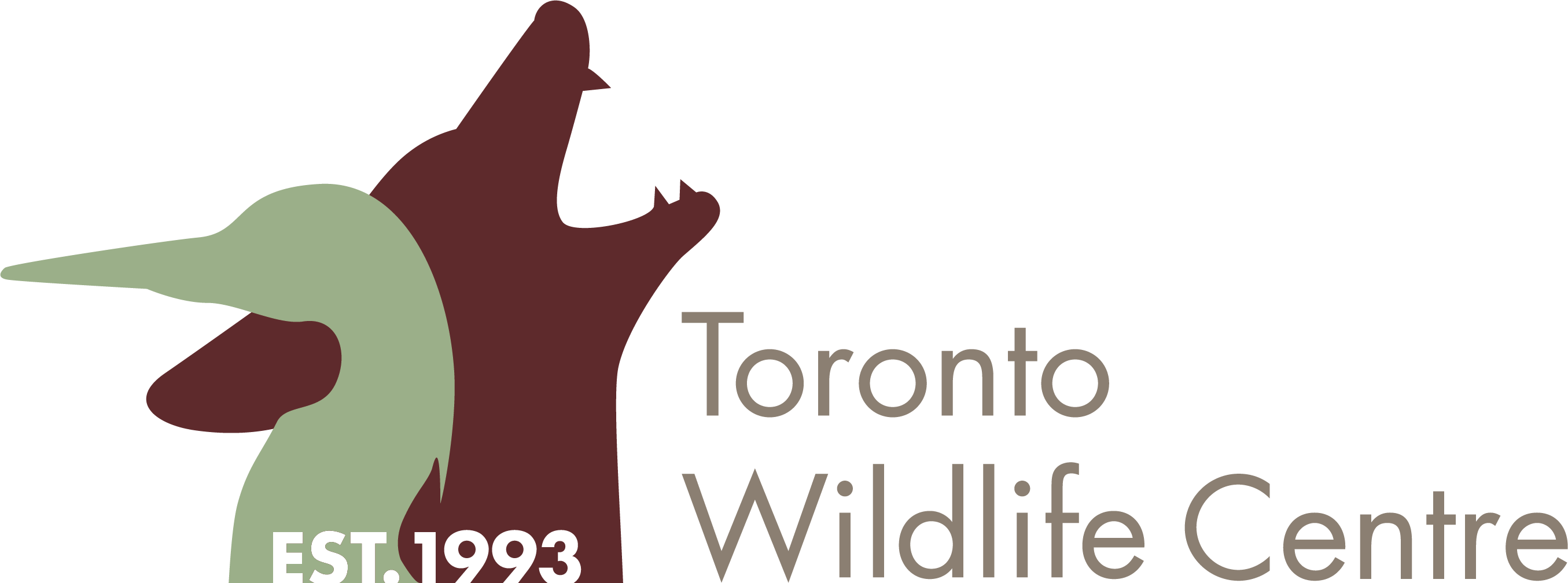On October 1st, Toronto Wildlife Centre (TWC) and Project Swallowtail launched a pollinator garden initiative with a beautiful garden installation.
For those not familiar with Project Swallowtail, it is a collaborative effort to empower residents to restore nature in Toronto. This is achieved through ‘Seed-Sitting’ groups whose members propagate native plants from seed and help create private and community pollinator gardens. The Underhill Seed-Sitters, the largest and most active Seed-Sitting group in Toronto, have been working with TWC to help set up a new Seed-Sitting group. They also very generously provided more than 300 native plants that they have grown, and volunteered their time to help get this initiative off the ground and plant the first garden.
Here’s how we installed our first pollinator garden.
Step 1: Site Prep
The site was home to a rusty old swing set and some Canada Goldenrod. The goldenrod is native, however, it is also a very aggressive species and is found sprinkled throughout the entire site, so the decision was made to remove this small patch to make way for a more diverse plant population that will support a wider variety of pollinators.
Before

After
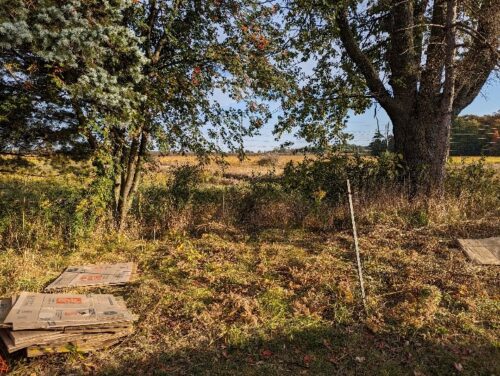
Step 2: Make Some Lasagna
A ‘modified’ lasagna garden method was used to create the garden. Typically, the lasagna garden method begins in the fall by smothering existing vegetation with newspaper or cardboard and covering it with varying layers of organic material. You then leave it to decompose and return in the spring to plant your garden. We sped up this process by using triple mix instead of undecomposed organic material, so the bed is ready to plant immediately.
Make sure to use only plain brown cardboard, remove as much tape/labels/staples as possible, and leave no gaps when you lay it down.
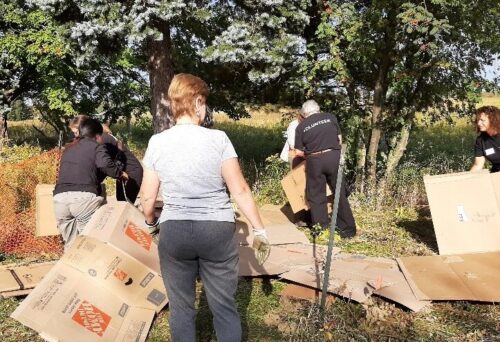
There happened to be a pile of dead brush nearby so we used it as an extra layer beneath the triple mix.
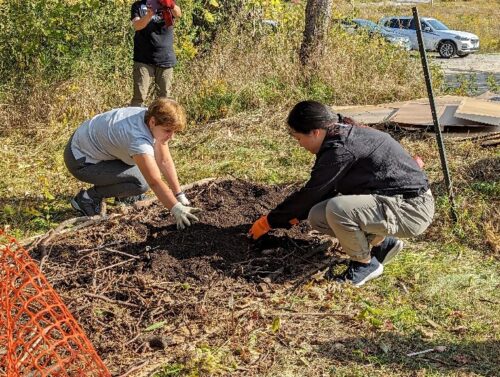
Step 3: Arrange your plants
You’ll notice the plants are arranged very close together. This ensures the garden will fill in quickly and leave little space for uninvited guests like invasive Queen Anne’s Lace and Dog Strangling Vine.
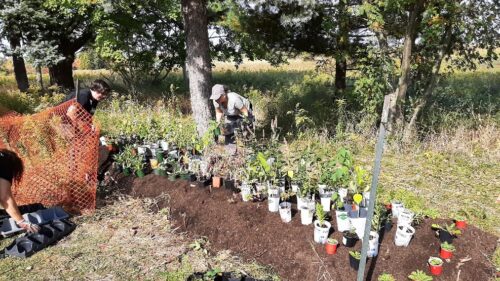
Step 4: Plant!
The triple mix layer is close to 10 inches thick which is deep enough for plants in smaller 4 inch to 8 inch pots. The garden includes 22 species and together they will provide food and shelter for a wide variety of animals, big and small, at all stages of development. For example:
Butterfly Weed (Asclepias tuberosa):
- Larval host plant for monarch, gray hairstreak, queen and milkweed tussock moth caterpillars.
- Nectar attracts: carpenter, yellow-faced, plasterer, and sweat bees; eastern tiger swallowtail, great spangled fritillary, and red admiral butterflies; ruby-throated hummingbirds.
Golden Alexander (Zizea aurea):
- Larval host plant for black swallowtail and nothern azure butterflies.
- Its small flowers are an important nectar source for insects with short mouth-parts such as bees, wasps, flies, and beetles.
Switch Grass (Panicum virgatum):
- Seeds provide food for ground-feeding songbirds, stalks provide nesting material, and dense clumps provide good cover for wildlife.
- Larval host plant for many skipper and satyr butterfly species.
This is just a tiny sample of the animal diversity that the new garden can support, and we look forward to spotting some of these fascinating creatures in the near future!
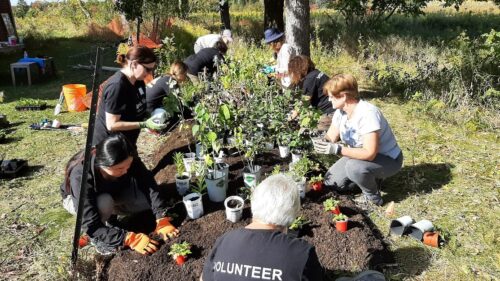
Step 5: Add Some Finishing Touches
Holes of varying sizes were drilled into logs arranged around the edge of the garden. The holes mimic beetle holes used by several native bee species (such as mason and leaf cutter bees) for nesting. The logs also create a visual and physical barrier to keep people out of the garden.
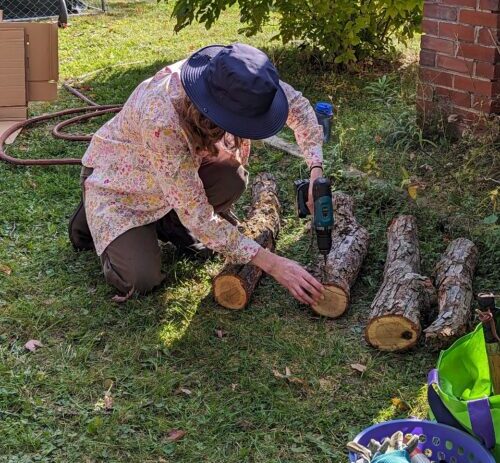
A light dusting of mulch was added to help prevent weeds, but not thick enough to inhibit ground nesting bees.
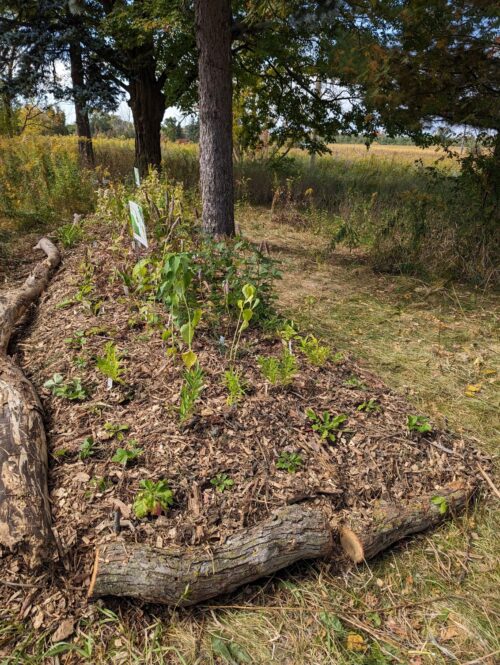
Step 6: Group Photo!
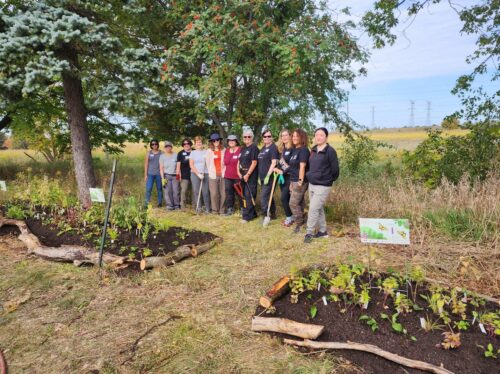
For more information about Project Swallowtail click here.
For the Underhill Seed-Sitters blog click here.
To get involved with the TWC Seed Sitters and future garden projects contact [email protected].
